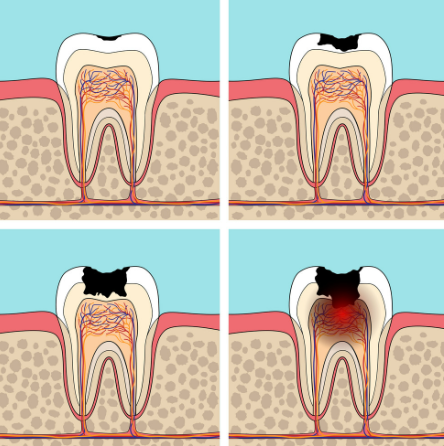Makindo Medical Notes"One small step for man, one large step for Makindo" |
|
|---|---|
| Download all this content in the Apps now Android App and Apple iPhone/Pad App | |
| MEDICAL DISCLAIMER: The contents are under continuing development and improvements and despite all efforts may contain errors of omission or fact. This is not to be used for the assessment, diagnosis, or management of patients. It should not be regarded as medical advice by healthcare workers or laypeople. It is for educational purposes only. Please adhere to your local protocols. Use the BNF for drug information. If you are unwell please seek urgent healthcare advice. If you do not accept this then please do not use the website. Makindo Ltd. |
Dental Caries
-
| About | Anaesthetics and Critical Care | Anatomy | Biochemistry | Cardiology | Clinical Cases | CompSci | Crib | Dermatology | Differentials | Drugs | ENT | Electrocardiogram | Embryology | Emergency Medicine | Endocrinology | Ethics | Foundation Doctors | Gastroenterology | General Information | General Practice | Genetics | Geriatric Medicine | Guidelines | Haematology | Hepatology | Immunology | Infectious Diseases | Infographic | Investigations | Lists | Microbiology | Miscellaneous | Nephrology | Neuroanatomy | Neurology | Nutrition | OSCE | Obstetrics Gynaecology | Oncology | Ophthalmology | Oral Medicine and Dentistry | Paediatrics | Palliative | Pathology | Pharmacology | Physiology | Procedures | Psychiatry | Radiology | Respiratory | Resuscitation | Rheumatology | Statistics and Research | Stroke | Surgery | Toxicology | Trauma and Orthopaedics | Twitter | Urology
Dental caries, commonly known as tooth decay or cavities, is a bacterial infection that causes the demineralization and destruction of the hard tissues of the teeth. It is one of the most common chronic diseases worldwide, affecting individuals of all ages.
Etiology and Pathogenesis

- Bacterial Infection :
- Dental caries is primarily caused by the bacteria Streptococcus mutans and Lactobacillus.
- These bacteria metabolize fermentable carbohydrates, producing acids that demineralize the enamel and dentin.
- Plaque Formation :
- Bacteria adhere to the tooth surface, forming a biofilm known as dental plaque.
- Plaque provides a microenvironment for acid production and retention.
- Demineralization and Remineralization :
- Demineralization occurs when the pH of the plaque falls below 5.5, leading to the loss of minerals from the tooth structure.
- Remineralization is the natural repair process where minerals from saliva and fluoride are redeposited in the demineralized areas.
- The balance between demineralization and remineralization determines the progression or reversal of caries.
Risk Factors
- Diet :
- High consumption of fermentable carbohydrates (sugars and starches) increases the risk of caries.
- Frequent snacking and sugary beverages contribute to prolonged acid exposure.
- Oral Hygiene :
- Poor oral hygiene practices lead to plaque accumulation and increased bacterial activity.
- Fluoride Exposure :
- Inadequate fluoride exposure reduces the remineralization process and increases susceptibility to caries.
- Salivary Flow :
- Reduced salivary flow (xerostomia) decreases the natural cleansing and buffering action of saliva.
- Genetics :
- Genetic factors can influence enamel structure, salivary flow, and susceptibility to bacterial colonization.
- Socioeconomic Factors :
- Lower socioeconomic status is associated with limited access to dental care, poor diet, and inadequate oral hygiene practices.
Clinical Manifestations
- Initial Lesions :
- Early carious lesions appear as white spots on the enamel, indicating demineralization.
- Progression :
- If demineralization continues, the enamel surface breaks down, forming a cavity.
- The decay can extend into the dentin and eventually reach the pulp, causing pain and sensitivity.
- Advanced Caries :
- Deep cavities can lead to infection, abscess formation, and tooth loss.
Diagnosis
- Visual Examination :
- Inspection of the teeth for white spots, discoloration, and visible cavities.
- Tactile Examination :
- Use of a dental explorer to detect soft, demineralized areas on the tooth surface.
- Radiographs :
- Dental X-rays can reveal caries that are not visible during a clinical examination, particularly interproximal and root caries.
- Laser Fluorescence :
- Devices such as DIAGNOdent use laser fluorescence to detect caries at an early stage.
Prevention and Management
- Oral Hygiene Practices :
- Regular brushing with fluoride toothpaste and flossing to remove plaque and food particles.
- Fluoride Therapy :
- Use of fluoride-containing products such as toothpaste, mouth rinses, and professional fluoride treatments to enhance remineralization.
- Dietary Modifications :
- Reducing the intake of sugary and acidic foods and beverages.
- Encouraging a balanced diet rich in vitamins and minerals to support oral health.
- Regular Dental Check-Ups :
- Routine dental visits for professional cleanings, examinations, and early detection of caries.
- Sealants :
- Application of dental sealants on the occlusal surfaces of molars and premolars to protect against decay.
- Restorative Treatments :
- Fillings: Removal of decayed tissue and restoration of the tooth with materials such as amalgam, composite resin, or glass ionomer.
- Inlays and Onlays: Custom-made restorations for larger cavities that require more extensive repair.
- Root Canal Therapy: Treatment for advanced caries that have reached the pulp, involving removal of the infected pulp tissue and sealing of the root canals.
- Crowns: Placement of a dental crown to restore and protect a tooth with significant decay or damage.
Summary
Dental caries is a prevalent and preventable oral disease caused by bacterial activity leading to demineralization of the tooth structure. Understanding the etiology, risk factors, clinical manifestations, and preventive measures is essential for effective management. Regular oral hygiene, fluoride therapy, dietary modifications, and routine dental check-ups play crucial roles in preventing and managing dental caries, ensuring optimal oral health.